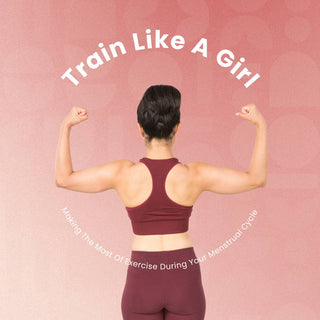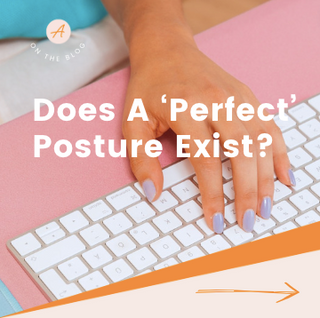In the 21st century, we see countless iterations of Yoga, from the more traditional Hatha, to Bikram, to westernized trends like ‘Goat Yoga.’ As the practice of Yoga has gradually been adopted in the West, its traditional roots and purpose are often misrepresented or not included at all. It is important to remember that Yoga is so much more than a form of exercise; the spiritual aspect of the practice is just as, if not more, relevant.
At Aleenta Health Club, our Yoga classes are centred around two styles: Hatha and Yin. We know Hatha is an older and well-known style, but where does Yin Yoga fall as a modern version of Yoga? Where does it come from, and does it uphold the full, traditional elements of Yoga? Well, it certainly has far more roots and benefits than doing a downward dog alongside a goat!
The History of Yin: A New, Yet Early Form
Yin Yoga was popularized by two practitioners; Paul Grilley and Sarah Powers. The style has a greater emphasis on passive, held postures that stimulate, stretch and strengthen our connective tissue. It aims to balance the mind and body, often alongside the practice of another yang style of Yoga such as Vinyasa. From 1979 into the 1990’s, Grilley expanded his own Ashtanga Yoga practice and knowledge, eventually combining Daoism, anatomy and the deeper spiritual aspect of traditional Yoga into the form we now know as Yin. So, despite being formerly ‘created’ in the late 20th century, the foundations of Yin span back thousands of years!
Daoism and Traditional Chinese Medicine
In a Yin class, you will often hear your instructor touch upon concepts of traditional Chinese medicine: in fact, Mariah explains the connection to Chinese Medicine in our Intro to Yin series! This is due to the influence of Daoism, a religion/philosophy based on the writings of Lao Tzu thousands of years ago, in which both Chinese medicine and Yin Yoga are rooted. One of the primary principles, yin and yang, refers to the opposite yet complementary elements that constitute our world, existing in harmony. Yin Yoga was partially born out of this philosophy: where other forms of Yoga are more powerful and stimulating (yang), Yin is calming, meditative and gentle. Grilley was introduced to Daoism through Paulie Zink, a martial artist and Daoist Yoga practitioner, often additionally credited with the creation of Yin Yoga.
Dr Hiroshi Motoyama and the Spirituality of Yin
Grilley came across Dr Motoyama in 1990, and travelled to Japan with him to learn more of his teachings. Dr Motoyama was the son of a skilful yogini and was adopted by Kinue Motoyama, his mother’s original yogic teacher. Through rigorous training in his young life, Dr Motoyama awakened several ‘powers’:
“His ability to see the energy fields, his ability to influence and correct faulty energy, to heal both those close to him and those in need far away.” (i)
However, he did not stop there! Dr Motoyama became a highly respected Shinto priest in Japan and held two PhD degrees. By combining his knowledge of Western medicine with his practice, he created tools that he and others could use to identify and feel the flow of energy within the body, a core aspect of Yin Yoga. Dr Motoyama wrote several books on his various studies and practices and contributed greatly to Yoga and science alike; sadly, he passed away in 2015.

However, the spiritual aspect of Yin, and other forms of Yoga, goes back far beyond Dr Motoyama.
“In the earliest spiritual books of India, the Vedas, yoga is not described as a path to liberation, and asana practice is not described at all. Rather, yoga, among its many other meanings, meant discipline, and the closest word to ‘asana’ was ‘asundi,’ which described a block upon which one sat in order to meditate.” (ii)
By about 400 CE, the Yoga Sutra was compiled, which defines Yoga as a psycho-spiritual practice used for ultimate liberation. Asana, the Sanskrit word for postures, were only a minor part of the text; The Yoga Sutra actually mentions asana only twice in all 196 teachings. All that is mentioned is that asana should be ‘sthira’ and ‘sukham’ (steady and comfortable). Although it is not exactly the same as a Yin Yoga class presented today, these are very much qualities embodied in a Yin practice. If the body is steady and comfortable, the mind is opened for meditation.
In the 1990’s, Grilley began teaching his own style of Yoga based on his previous Ashtanga (yang) practice, study of anatomy, Daoism and Dr Motoyama’s teachings. He took on several students and even introduced some to Motoyama himself, one of those being Sarah Powers. Powers coined the term and style’s name, forever dubbing it ‘Yin Yoga.’
The Modern Science Behind Yin
Yin Yoga has countless benefits, including improving flexibility, mental health, circulation and sleep (iii). These outcomes have been seen and felt by many Yogi’s around the world, but what does the science say?
Research into Yoga and its benefits in Western science are often quite generalised and rarely reference the specific type of Yoga utilised in studies. However, the psychological enhancements specific to Yin have been proven in several recent publications!

A 2017 study tested a program that combines psychoeducational training with yin Yoga practice. The participants undertook the program for 5 weeks: researchers found a significant decrease in stress and worry (iv). After a 5-week follow up, these results were still present!
In a 2018 study, researchers sought to prove the effects of a regular, Yin Yoga practice on reducing adrenomedullin (ADM) in moderate to highly stressed adults. Elevated ADM has been linked to psychological problems such as stress, anxiety, and depression, which are known risk factors of non-communicable diseases such as heart disease (v). The participants who took up a Yin Yoga practice for 5 weeks displayed greater reductions in plasma ADM levels, reduced anxiety and depression, and improved sleep! This promising study therefore suggests that a regular Yin Yoga practice could be a simple, low-cost alternative to limit the negative health effects of high stress.
Finally, a recent 2021 study utilised Yin Yoga specifically for its accessibility to those who have never practised any kind of Yoga before. Researchers had student and faculty Pharmacists, a profession that can often cause high amounts of stress, take one Yin Yoga class a week, followed by a guided meditation, for 6 weeks. The participants, aged between 18 and 66 years, reported decreased stress and anxiety levels (vi). Additionally, increased mindfulness was reported at the 3-month and 6-month follow ups, showing long-term benefits of a Yin Yoga practice!
While it may be a newer form of Yoga, Yin was born out of ancient philosophies that align directly with the original purpose and practice of Yoga, making it the perfect addition to your wellness routine. If you already participate in a more yang-style class, whether it be Vinyasa Yoga or Barre Blast, perhaps consider incorporating a Yin Yoga class to balance out your mind and body. If you experience high stress in your daily life, Yin could be the cure; after all, the science doesn’t lie! Even if you don’t have time to make it in-studio, we have free classes on our YouTube channel that are perfect for dipping your toes into the world of Yin.
Works Cited
(i, ii) Clark, Bernie. History. 2006-2022. 20 December 2022. <https://yinyoga.com/yinsights/history/>.
(iii) Cronkleton, Emily. Yin Yoga Poses to Reset Your Body and Mind. 30 July 2021. 20 December 2022. <https://www.healthline.com/health/fitness/yin-yoga-poses>.
(iv) Hylander, Frida and et al. "Yin yoga and mindfulness: a five week randomized controlled study evaluating the effects of the YOMI program on stress and worry." Anxiety, stress and coping 30.4 (2017): 365-378.
(v) Daukantaitė, Daiva and et al. "Five-week yin yoga-based interventions decreased plasma adrenomedullin and increased psychological health in stressed adults: A randomized controlled trial." PloS one 13.7 (2018).
(vi) Lemay, Virginia and et al. "Impact of a Yin Yoga and meditation intervention on pharmacy faculty and student well-being." Journal of the American Pharmacists Association 61.6 (2021): 703-708.
Summers, Josh and Terry Summers. Why Yin Yoga Works: A Scientific Explanation. 11 December 2019. 20 December 2022. <https://joshsummers.net/why-yin-yoga-works/>.





